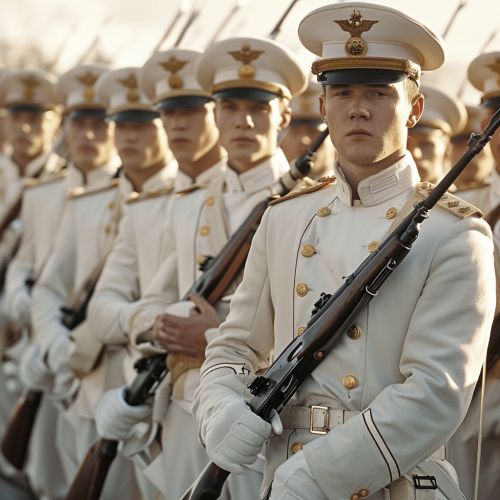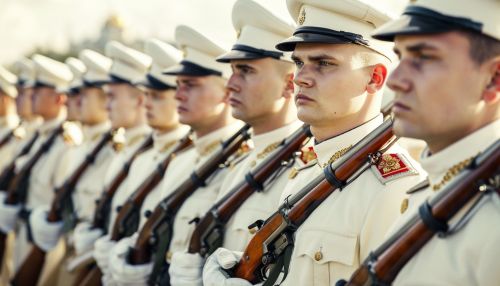White Army
Origins and Formation
The term "White Army" refers to the forces that opposed the Bolsheviks (or Reds) during the Russian Civil War from 1918 to 1922. The White Army, also known as the "White Guard," "White Movement," or "Whites," was a loose confederation of Anti-Communist forces. The Whites represented a large spectrum of political ideologies, including monarchists, capitalists, and socialists who opposed Lenin's Bolshevik government.


The White Army emerged from the anti-Bolshevik forces that formed during the 1917 Russian Revolution. The initial groups were composed of volunteer armies, such as the Volunteer Army in South Russia and the Siberian Army in East Russia. These groups were later joined by defecting Imperial Army units and Cossack hosts.
Political Ideologies
The White Army was not a unified force but rather a collection of different groups with varying political ideologies. Some were monarchists who wished to restore the Russian monarchy under the rule of the Romanov dynasty. Others were republicans who wanted a democratic government. There were also social revolutionaries who sought a socialist government but opposed the Bolsheviks. Despite their differing ideologies, these groups were united in their opposition to the Bolsheviks.
Military Structure
The military structure of the White Army was as diverse as its political ideologies. Some units were remnants of the old Imperial Army, maintaining their traditional hierarchical structure. Others were volunteer armies, formed by individuals who took up arms against the Bolsheviks. There were also Cossack units, which were organized based on their traditional military structure.
In terms of military strategy, the White Army often relied on conventional warfare tactics. They attempted to capture key cities and strategic locations, hoping to cut off Bolshevik supply lines and cripple their forces. However, this strategy was often ineffective against the Bolsheviks' guerrilla warfare tactics.
Major Campaigns
The White Army was involved in several major campaigns during the Russian Civil War. One of the most significant was the Southern Front, where the Volunteer Army, led by General Anton Denikin, made significant advances against the Bolsheviks in 1919. However, they were eventually pushed back and defeated.
On the Eastern Front, Admiral Alexander Kolchak led the White forces. Despite initial successes, his forces were eventually defeated by the Red Army. In the North, General Nikolai Yudenich led a White Army against Petrograd, but this too was ultimately unsuccessful.
Decline and Defeat
The White Army was unable to form a united front against the Bolsheviks, which contributed to their defeat. Their diverse political ideologies led to infighting and a lack of a clear, unified strategy. Furthermore, the White Army was less successful at garnering popular support than the Bolsheviks, who promised land and peace to the war-weary Russian populace.
By 1922, the White Army had been largely defeated. Many of its leaders fled Russia, while others were captured and executed by the Bolsheviks. The defeat of the White Army marked the end of the Russian Civil War and the beginning of the Soviet Union.
Legacy
The legacy of the White Army is complex. In Russia, they are often viewed as a reactionary force that sought to restore the old regime. However, they are also seen as a symbol of resistance against the Bolsheviks. In the West, the White Army is often romanticized as a force of freedom fighters who stood against the rise of communism.
